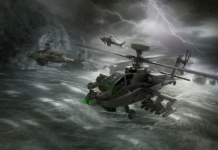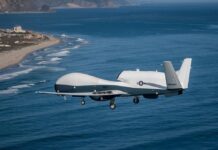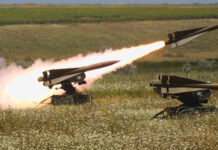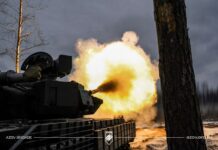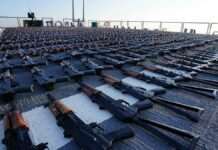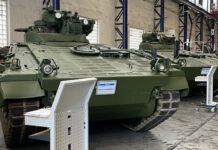The sudden withdrawal of NATO from Afghanistan in 2021 and Russia’s latest invasion of Ukraine in February this year have thrown the international special operations forces (SOF) community into a state of flux as they prioritise future responsibilities.
After two decades of counter-terrorism (CT) and counter-insurgency (COIN) campaigns focused primarily on south-central Asia and the Middle-East, SOF have suddenly been called upon to prepare for more conventional warfare against highly capable, near-peer adversaries.
This is not to say NATO SOF organisations were not already preparing for such contingency operations many years ago. Indeed, members of the alliance from northern and eastern Europe in particular, have been identifying concepts of operation (CONOPS) and technology to counter Russian Armed Forces as far back as 2014, following the illegal annexation of Crimea.
Many members of central and eastern Europe’s NATO SOF community met in Budapest from 4-6 October 2022 at the Global SOF Symposium to discuss many of these emerging requirements. One of the headliners at the event was the commander of the NATO SOF Headquarters (NSHQ), Lieutenant General Antonio ‘Tony’ Fletcher who described how the World is getting more competitive and how SOF are already “campaigning in complex geo-political climates”. Fletcher promoted a vision of NATO SOF moving forward as an alliance to more effectively counter near-peer adversarial threats which have risen to prominence over recent years, stating:
“NSHQ’s responsibility is to help build combat power in support of the alliance’s defence objectives,” he explained to delegates at the event. “Our team champions the ethos that SOF must continue to be unconventional, agile, adaptive and fully integrated in order to deter and defeat the threat and challenges we all face.”
Fletcher also illustrated how NSHQ continues to “strive to contribute to the readiness of SOF through our policy, doctrine, education and capability development”, acknowledging that his command fully understands that “capacity, capability and confidence underpin the trust that nations place in all of their SOF.” He continued:
“We will continue to identify those SOF-derived effects and persuade adversaries to question their chances of success; hold critical adversary capability at risk; and create strategic dilemmas for our adversaries, all in support of the joint force…To deliver these effects, SOF must perform military assistance, direct action and special reconnaissance focused on the most sensitive targets and the greatest threats that our nations face. While these activities vary, these SOF core tasks endure to continue adaptation to utilise current and future technology.”
Fletcher also referred to a rapidly evolving curriculum of NSHQ’s NATO Special Operations School, stating: “We are pivoting away from many of the exquisite skillset teaching that we were doing to ensure forces were ready to succeed in Afghanistan to what it means to deter, what it means to defend, what it means to support the alliance with a near peer competitor.”
Materiel Requirements: Large-Scale Combat Operations
The so-called ‘pivot’ away from CT and COIN operations towards missions against near-peer adversaries requires a fundamental change in materiel requirements, not to mention tactics, techniques and procedures designed to overmatch a very different opponent.
The importance of materiel capable of overmatching modern pacing threats across the contemporary operating environment was uniquely described by the commander of Ukrainian Armed Forces SOF, Brigadier General Viktor Khorenko. As the war with Russia approaches a year in duration, the Ukrainian Armed Forces SOF (UASOF) are now quite easily the most educated special force when it comes to successfully engaging a near-peer adversary. Defence sources suggested that UASOF could be educating the wider NATO SOF community when it comes to engaging with highly capable SOF adversaries on the modern battlefield.
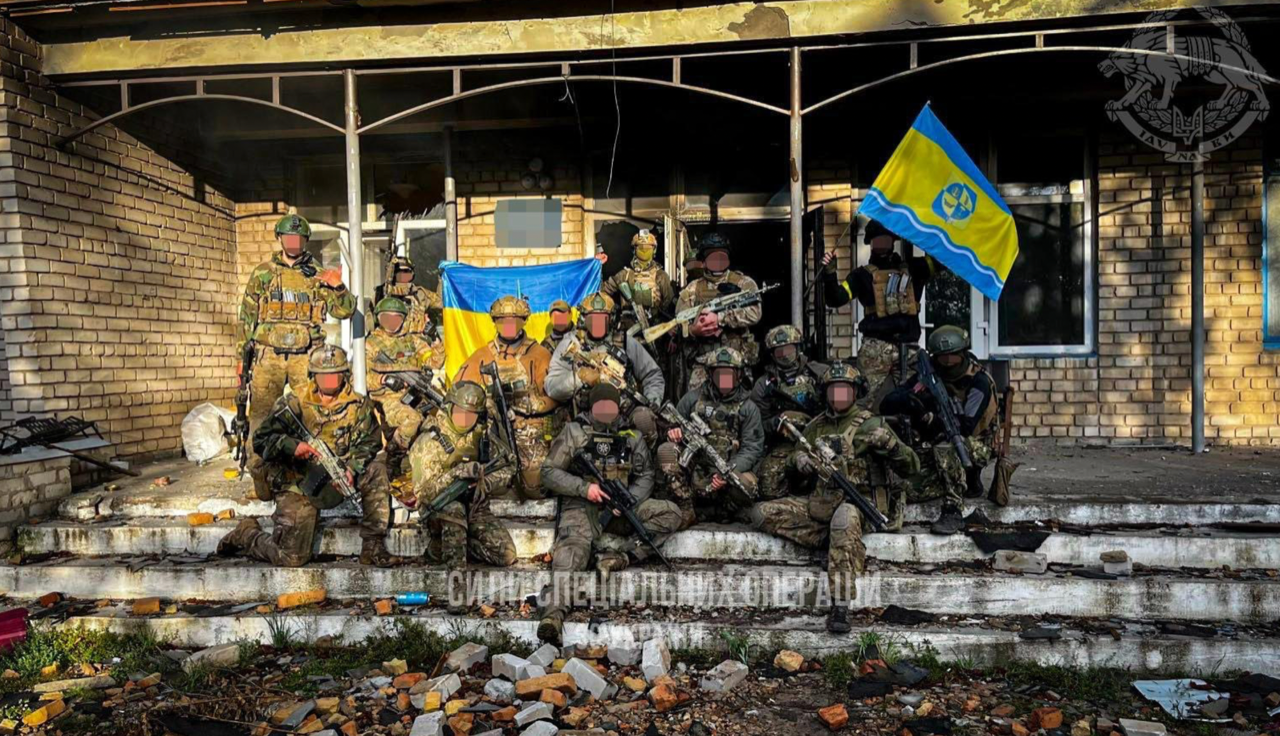
Credit: Ukrainian SOF
Referring to the ongoing conflict, Khorenko suggested that mission success very much depends upon “technology advancements” to enable the “quick-passing of intelligence; ability to strike behind enemy lines from positions of safety; and operate silently.” Khorenko described how UASOF require additional modern weapons and solutions before warning: “Equipment and especially its procurement is unfortunately not a fast process and somewhat a complicated one. Under constant review, it is important to effectively manage national resources and donor aid from partner countries as well.”
To date, UASOF have benefited from a variety of anti-tank guided munitions, software defined radios, tactical ground vehicles, personal protective equipment, night vision equipment and loitering munitions from NATO partners. However, Khorenko has demanded more equipment and used the GSOF symposium to call for “low visible, undetected and low profile ISR [intelligence, surveillance and reconnaissance] assets; EW [electronic warfare]-resistant UAVs [unmanned aerial vehicles] and Loitering Munitions; night vision goggles; secure, low visibility and low profile communications; and low visibility and low profile demolition charges”.
“I would like to directly thank all the partners of the armed forces of UASOF. Please do not stop supporting us. Our success in this war very much depends on tech overmatch against the enemy,” he continued before concluding: “Please do not stop supporting us. Our success in this war very much depends on technology overmatch against the enemy”.
Intently listening to Khorenko’s list of materiel demands, SOF commanders from across central and eastern Europe also disclosed some of their materiel requirements, based largely on lessons learned from UASOF. According to the commander of Slovakia’s 5th Special Forces Regiment, Brigadier General Branislav Benka, SOF is leaning heavily towards technology to maximise operational effectiveness.
“We are trying to find different platforms, different ways and solutions to facilitate the technologies which are heavily in use on both [Russian and Ukrainian] sides and trying to adapt our teams [for challenges] ahead of us.” Benka warned “It’s not going to be easy,” adding that “SOF operators are still going to carry a rucksack and rifle, but they are going to have to understand the information technology environment,” he urged before stressing using technology to their advantage would be the “only way” to defeat near-peer adversaries in the future. “We weren’t negotiating with industry what we needed. That’s going to change so we can close the loop to get [materiel] faster. We need to be more open to discuss what is required et cetera,” he concluded.
One of the most critical areas of interest outlined by SOF commanders at the symposium included a “hyper-focus” on the provision of the “right levels in command and control” (C2) to ensure SOF operators benefit from optimal levels of situation awareness (SA). In order to better operate across an information-centric battlespace, SOF must be supported by real-time common operating pictures which provide commanders with SA even when operating at the tactical edge, but also compress decision-making processes, and so shortens the targeting cycle.
Specifically, the commander of the Hungarian SOF (HUNSOF), Major General Tamás Sándor, was one of the SOF leaders at the conference to demand for SOF operators benefit from a more effective C2 solution on the back of lessons learned from UASOF in Ukraine over the last year.
“We need effective C2, and we need to carefully listen to what our Ukrainian friends are telling us,” he urged. “They can tell us how effective it is in the real world. We had C2 in Iraq and Afghanistan but it is not as available as we thought in the new operating environment,” Sándor described while referencing currently employment of BICES (Battlefield Information Collection & Exploitation System) workstations across HUNSOF. “Is it going to be as effective as we need? We need to be open-minded, looking at how civilians are operating in this environment,” he continued to ask before suggesting the design and development of a ‘SOF-specific’ C2 solution which could be implemented throughout NATO member states.
Slovakia’s Brigadier General Benka also described a September visit to the Ukrainian MoD before the GSOF Symposium, suggesting: “We are spending hours and days to set up the network and set up the headquarters and tactical operations centres. We are doing something wrong. We need to bring a lot of equipment to set up while the peer-to-peer conflict is running a different way’, he explained before also suggesting the development of a “totally different type of C2 system” suitable for SOF. “We are working on this as of now to develop practices and experiences coming from the ground in Ukraine,” he added.
Another critical demand signal arising from the ongoing conflict in Ukraine is the number of aviation assets available to NATO SOF, particularly relating to helicopters. At the GSOF Symposium in Budapest, Lieutenant Colonel René Van Riet of the NSHQ Air Development Programme, claimed NATO SOF organisations do not have enough SOF aviation assets at present. The colonel’s thoughts were echoed by Brigadier General Philip J. Ryan, Commanding General of the US Army Special Operations Aviation Command which retains operational control of the famed 160th Special Operations Aviation Regiment, known as the ‘Nightstalkers’.

Credit: US Army/Sgt. Stanford Toran
Describing the pivot away from CT and COIN operations in Afghanistan towards the modern, near-peer fight, Ryan explained: “We had air superiority almost all the time. We owned the night and used the element of surprise and night vision goggles to accomplish missions in Iraq, Afghanistan or anywhere else.” Describing a new phase in “large scale combat operations” for SOF, Ryan added: “We may not have air superiority in the future”. Ryan also suggested the deployment of specialist intelligence cells capable of providing SOF aviation task units with the ability to “identify, detect, defeat and survive” against near-peer threats in the future operating environment.
Such cells, he suggested, could feature a team of analysts able to run through specific mission scenarios before a special operations air task unit would even get in the air, allowing pilots and crew to best understand complex threats facing them in the area of operation. “They would need to understand various radar systems; utility of sensors and tactics so we can operate against [near-peer] adversaries; and proliferate those ideas back to the US Army and share with friends and allies to prepare for large-scale combat operations,” Ryan suggested.
Also speaking at the GSOF symposium was the US Special Operations Command’s (USSOCOM’s) acquisition executive, Jim Smith, who listed a series of technology areas of interest currently being pursued by the Tampa-based organisation to support CT/COIN operations through to mission sets against near-peer adversaries. “USSOCOM is going to move quieter. There are things we did in the past that we did in a more transparent way. We need to get better,” Smith disclosed while indirectly referring to the rapidly evolving pivot away from CT and COIN to global strategic competition.
Similar to some of the technology areas of interest announced earlier by Khorenko, USSOCOM priorities include the ability to communicate in contested environments. “We don’t have the solution today we want,” Smith warned. “We’re not there yet. I want our operators to be able to talk without getting detected and have their output get to where it needs to without being altered.”
Also highlighted by Smith was a pair of concepts being explored by USSOCOM to enhance levels in mobility, particularly in the Indo-Pacific. Both the High Speed Vertical Take-Off/Landing concept and amphibious variant of the MC-130J, referred to as the ‘MAC’ could be used for CT/COIN operations as well as mission sets associated with strategic competition, defence sources suggested. “There are significant engineering challenges, but these are something we are very interested in,” Smith concluded.
Materiel Requirements: CT and COIN
Despite strong focus on operations against near-peer adversaries, NATO SOF must still retain capability to conduct CT and COIN, in some cases both at home and abroad. Materiel required to conduct such operations is typically very different to that required to support special operations against near-peer adversaries, industry sources explained.
More than two decades ‘on the ground’ in Iraq and Afghanistan in the 21st Century has significantly reduced the appetite of NATO members to deploy SOF abroad on a permanent basis. Furthermore, the withdrawal of SOF task groups from Afghanistan is now forcing NATO SOF to consider alternative means of successfully executing special operations.
For this reason, the international special operations community and particularly US Special Operations Command, is now concentrating on capability to successfully execute ‘Over-the-Horizon’ special operations which essentially rely upon remotely deployed technologies to target and prosecute targets. Examples include the successful targeting and neutralisation of Al Qaeda’s leader, Ayman Al-Zawahri on 1st August 2022. Zawahri was understood to have been killed by a pair of Hellfire missiles launched from a UAV, most likely MQ-9 Reaper.
Few details were officially disclosed by the US Department of Defense about the operation but given the fact there was zero official presence of US SOF in the country at the time, it is highly likely the targeting process would have relied heavily upon beyond line of sight/over the horizon assets including satellites and semi-autonomous platforms, industry sources suggested.
Beyond over-the-horizon drone strikes, NATO SOF is expanding its CT/COIN capabilities through enduring partnerships with indigenous special mission units, particularly in the Middle East, Africa, Latin America and the Indo-Pacific. Examples include the annual Flintlock exercise which was once again resumed in February this year following its cancellation in 2021 due to the COVID-19 pandemic.

The event was last conducted in Senegal, West Africa over the course of February, with a large number of special mission units from across the region undertaking counter-VEO training under the auspices of NATO SOF units. Participating special mission units were drawn from Benin, Burkina Faso, Cabo Verde, Cameroon, Chad, Cote d’Ivoire, Gambia, Ghana, Guinea-Bissau, Mauritania, Morocco, Niger, Nigeria, Senegal, and Tunisia with instruction from NATO
SOF personnel from Austria, Belgium, Brazil, Canada, the Czech Republic, France, Germany, the Netherlands, Norway, Poland, Portugal, Spain, the United Kingdom, and the United States. Training focused on the tactics, techniques and procedures (TTPs) required by SOF units to conduct CT and COIN operations on the ground and at sea.
Given the relative smaller budgets of West African partners, materiel used to support training during the Flintlock exercise is restricted to small arms, personal protective equipment, tactical ground vehicles, small boats and small UAVs.
Similar instruction and materiel is provided to Latin American SOF units as part of the annual Fuerzas Comando exercise, which was last conducted in June 2022. The event was held in Honduras, and included SOF from the host nation as well as Argentina, Brazil, Chile, Colombia, Costa Rica, Ecuador, El Salvador, Guatemala, Haití, Jamaica, Panamá, Paraguay, Perú, Trinidad and Tobago, and the US. According to exercise officials, the programme is designed to improve levels in interoperability and cooperation, particularly in terms of CT, COIN, counter-narcotics and counter-organised crime on land, in the air and at sea.

Credit: US Army/Spc. Christopher Sanchez
Conclusion
The latest war in Ukraine has forced NATO to re-prioritise threats and has consequently placed greater urgency upon materiel requirements for strategic competition ahead of CT and COIN campaigns. However, these very different capability sets will both need to be catered for, particularly as violent extremist organisations continue to generate support around the World.
Unfortunately for government expenditure, there is little similarity in equipment requirements for CT/COIN and operations associated with strategic competition, meaning SOF commanders will be forced to make difficult decisions in the short to medium terms.
Andrew White



